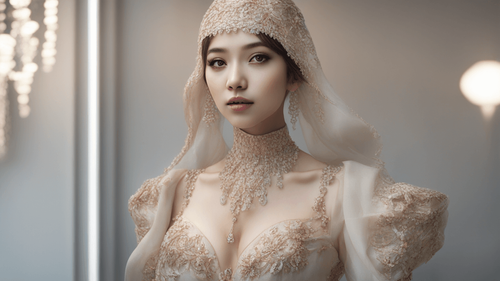
Introduction
In an era marked by technological revolutions, the integration of artificial intelligence (AI) has spurred remarkable advancements across various industries. One particularly intriguing facet of AI is its role in image rendering. From unleashing new dimensions of artistic creativity to enhancing visualizations in scientific endeavors, AI image render stands as a captivating testament to the potential of machine learning algorithms. This article delves into the fascinating world of AI image render, uncovering its implications, applications, and the remarkable transformations it brings to the creative and visual landscape.
AI Image Render: Unveiling the Magic
Understanding AI Image Render
AI image render, a subset of computer vision, refers to the process of employing AI algorithms to generate and refine images with an astonishing level of realism and artistic flair. Leveraging advanced neural networks, AI systems can analyze input images and generate visually compelling outputs that mimic human artistic techniques. This technology has transcended the realm of mere automation and entered the realm of creative coalescence, enabling machines to produce art that resonates with human emotions.
The Ingenious Mechanism Behind AI Image Render
At the heart of AI image render lies the ingenuity of deep learning networks. These networks, inspired by the human brain's neural architecture, comprise layers of interconnected nodes that process and interpret data. Generative Adversarial Networks (GANs) and Variational Autoencoders (VAEs) are the leading champions in the AI image rendering arena. GANs pit two neural networks against each other—the generator fabricates images, while the discriminator evaluates their authenticity. This rivalry fosters a feedback loop that culminates in progressively refined, lifelike images.
Revolutionizing Artistic Expression
AI Image Render as a Tool for Artists
Artistic creation has long been the domain of human imagination and skill. However, the emergence of AI image render has introduced a novel collaborator in the artistic process. Artists and designers now harness the power of AI to amplify their creative endeavors. By inputting basic guidelines and desired styles, artists can witness their visions metamorphose into visually captivating masterpieces that challenge traditional notions of creativity.
Fusing Tradition with Innovation
AI image render isn't about replacing artists; it's about expanding their toolkit. The technology bridges the gap between traditional artistic techniques and contemporary innovation. Artists can experiment with styles that were previously challenging or time-consuming to master, all while preserving the essence of their unique touch. This synergy of tradition and innovation broadens the horizons of artistic expression.
Elevating Visualizations Across Domains
Scientific and Medical Visualizations
Beyond the realm of art, AI image render finds profound utility in scientific and medical visualization. Researchers utilize AI-generated images to convey complex concepts, making them accessible to a broader audience. From illustrating intricate biological processes to simulating the behavior of celestial bodies, AI image render empowers researchers to convey their findings with unprecedented clarity.
Architectural and Design Visualization
In architectural and design domains, AI image render is revolutionizing the presentation of concepts. Designers can now breathe life into blueprints and models, offering clients immersive virtual tours of spaces that are yet to be constructed. This technology transcends two-dimensional sketches, fostering a deeper understanding of spatial aesthetics and functionality.
AI Image Render FAQs
-
How does AI image render work? AI image render operates through neural networks that analyze input images and generate refined outputs that mimic human artistic techniques.
-
Can AI image render replicate specific artistic styles? Absolutely. AI image render can be trained to replicate various artistic styles, from impressionism to cubism, enabling artists to explore diverse visual languages.
-
Is AI image render limited to art? No, AI image render has applications beyond art. It is extensively used in scientific visualizations, medical imaging, architecture, and design.
-
Does AI image render replace human creativity? No, AI image render enhances human creativity by offering new tools and techniques, expanding artistic possibilities.
-
What are the ethical implications of AI-generated art? AI-generated art raises questions about authorship and authenticity. Debates surrounding ownership and artistic merit are ongoing.
-
How is AI image render evolving? AI image render is evolving rapidly due to advancements in deep learning and neural network architectures, leading to even more realistic and diverse outputs.
Conclusion
In the realm of AI-driven transformations, AI image render emerges as a testament to the symbiosis of human ingenuity and technological prowess. From amplifying artistic expression to refining visualizations across various domains, this technology is reshaping our perceptions of creativity and visualization. As AI image render continues to evolve, it invites us to explore uncharted dimensions of human-machine collaboration and reimagine the boundaries of artistic innovation.